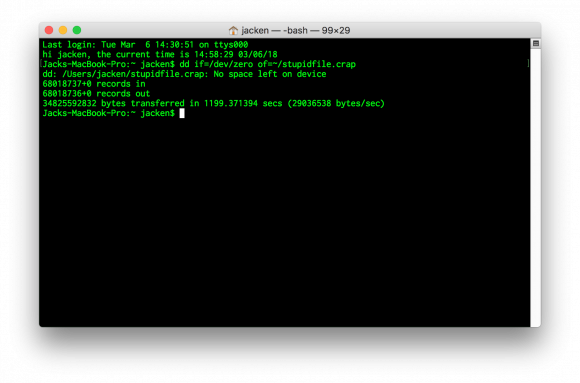What is taking up space on my hard drive?
In spite of its amazing features, the Macbooks hard drives fill up quickly after storing few data on it. We are unable to save a massive amount of data in the MacBooks. But we have here discussed some solution through which you can quickly free up space in MacOS and MAC OS 10. You can free up the disk space by following the simple tips. While the GNU operating system provides other shells, including a version of csh, Bash is the default shell. Like other GNU software, Bash is quite portable. It currently runs on nearly every version of Unix and a few other operating systems - independently-supported ports exist for MS-DOS, OS/2, and Windows platforms.
Very often Mac OS users face the problem that there is not enough disk space available for an operation. It goes without saying, that you need to clean the hard drive and free up disk space. However, there is a question: what should be removed? As the rule, duplicate files take the biggest part of available memory. Sometimes such files are placed in different directories and generally it's very difficult to find them. The second reason of out of memory problem is big files. When you are using your Mac sometimes it's filling up with various large media files and documents. Very seldom it's really difficult to find the directory of these files. So, Mac OS users decide to leave it as it is and after a while they face with our problem. That's why we've prepared the detailed guide on how to free up disk space on Mac OS!
Clear system storage on Mac. System storage cleanup sounds like a serious undertaking. Empty The Trash. The most obvious and easy way to free up some space is to empty the Trash. MacBook Pro, MacBook Air or even an iMac are computers that run on Mac OS X and are manufactured and sold by Apple. They are preferred by people who use their systems for work mostly.
How to free up disk space on Mac OS
Here you have two options: use our automatic solution, which can help you to save your time and mental health, or you can use manual solution and built-in software.
How to free up disk space on Mac OS automatically?
We recommend you to use CleanMyMac X. This program allows you to keep your hard drive in a good state with the help of various applications such as junk files cleaner, shredder, system performance optimizer and etc. Download CleanMyMac X right now and clean your Mac hard drive easily and fast!
How to free up disk space on Mac OS manually?
There are a number of operations which you should proceed to fully free up disk space on Mac OS, or you can just take several steps in order to free a few.
Store in iCloud
Desktop and DocumentsOptimize device Storage
Automatically remove watched movies and TV showsQuickly No Space Mac Os Takes
In Mail, choose Mail > Preferences from the menu bar, then click Accounts. In the Account Information section on the right, Optimize Storage sets the Download Attachments menu to either Recent or None.
Statera mac os.
Michios death drive mac os.
How To Free Up Space On Mac


